Monthly Newsletter – Vía Orgánica
For organic regenerative agriculture, fair trade,
social justice, sustainable living and sustainable production
Ranch news
REGENERATIVE FARM
Poultry
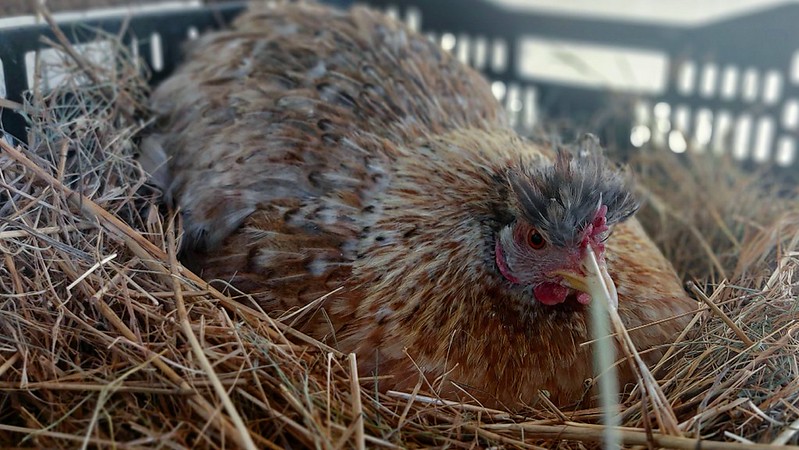
Poultry start their day along with the first rays of the sun at the Regenerative Farm, a diversified model where they live in open-air paddock spaces with extensive land to explore. Their diet is complemented with a mixture of local grains, maguey fodder, wheat sprouts, and insects: mainly grasshoppers, larvae, and June beetle larvae that they find in their pastures. The olive trees, blackberries, mesquites with some agaves and nopales that have recently been included offer shade and a bit of protection from some predators. On one hand, the grasslands that have already been established as a vegetal cover green up in the rains and provide food, fodder, protection, reduce erosion, store water; in the dry season they function as dry cover and also as dry hay that is used as a base layer in the hens’ bedrooms to absorb moisture from their manure. In the end, this material is recycled through compost or bocashi and is reincorporated into the fertilization of trees and other plant species.

During the winter, the chickens take shelter at night in two sheds and in our two spacious paddocks where they fly around, and when their doors open in the morning they rush out wanting to reach the sun’s rays. This system generates various products such as eggs, meat, fruits, stalks for fodder, biomass, seeds and a microbiological diversity that interacts and remains alive under the cover.
In this season you can observe the brown colors of the vegetation after the rains have receded but during this season, corn, sunflower and even squash are planted, which are part of the grazing areas and the chickens are in charge of weeding and reducing the grasshoppers’ populations that also arrive with the humidity of the season.
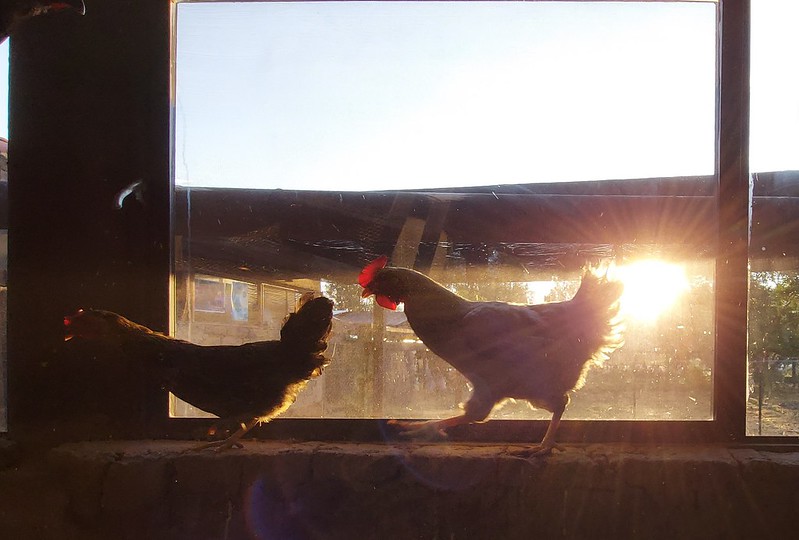
The hens’ management is preventive, the spaces where they sleep are sanitized with vinegar, lime and microorganisms. In their drinking water, a bark of palo dulce is placed, a native tree that keeps its digestive tract clean and prevents infections; homeopathy is also used, and their food made up of local grains, maguey fodder, wheat sprouts and their daily grazing from sunrise to sunset keeps them healthy.
Can you imagine being a poultry and living on this farm? These are happy chickens!
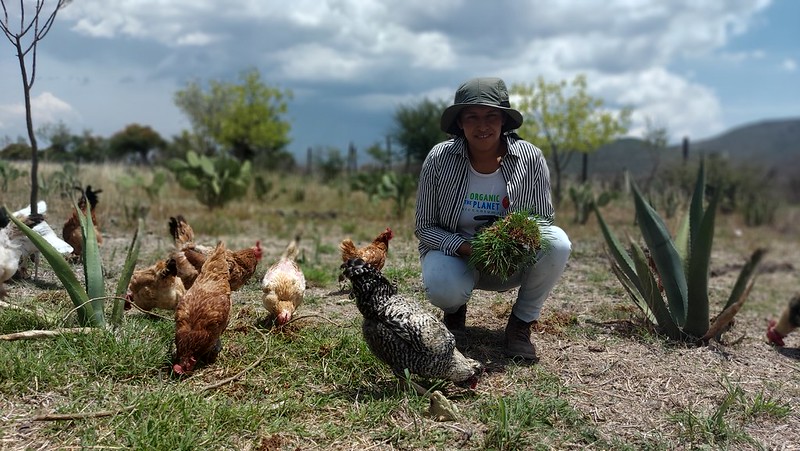
Lourdes Guerrero is in charge of this farm and a neighbor of the community. She and her support team are in charge of keeping the farm in action; now they have added a space for the production of rabbits, which we will talk about in another newsletter. Animals can be part of soil regeneration and allies in landscape recovery.
Visit the regenerative farm and eat free-range meat and eggs!
Packages
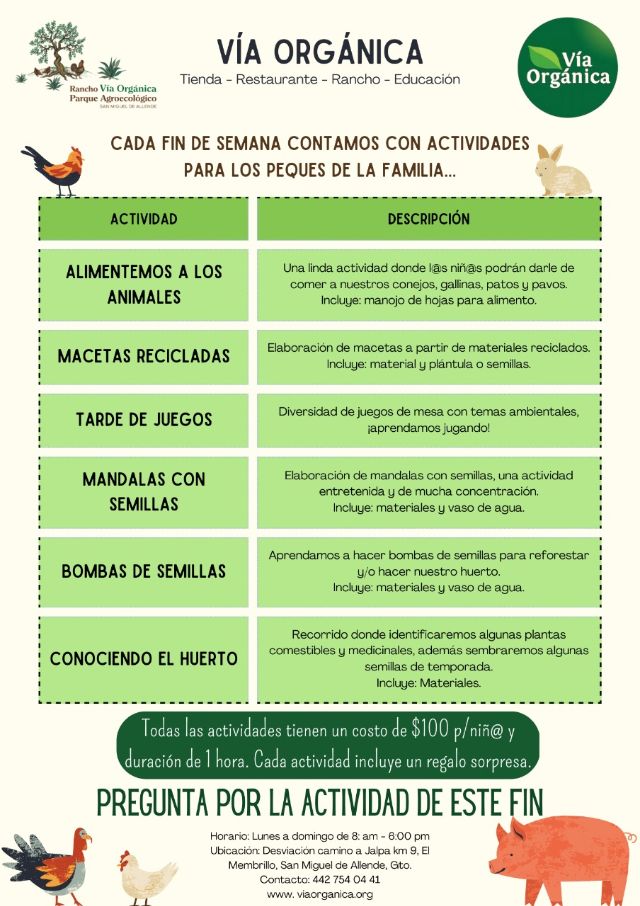
This year visit for the first time or return to the Agroecology Park project in the Jalpa Valley in San Miguel de Allende, Guanajuato. Make your own package: you can include delicious food with nixtamalized corn tortillas and fresh, live salads straight from the garden. Experience a guided tour visiting all the areas of the ranch and learn how the farm works. You can choose to stay in one of our adobe cabins and end the day with a campfire at the lookout.
Every weekend we’ve got activities for children where they can plant, feed the animals and even harvest their greens for salad.
This month try a unique experience, explore the regenerative farm and get your free grazing eggs; get to know the new rabbit area and take a photo of our beautiful mural at the end of the regenerative farm.
Remember that your visit supports environmental education and care for the planet.
Billion Agave Project
How to make layers of mesquite trees
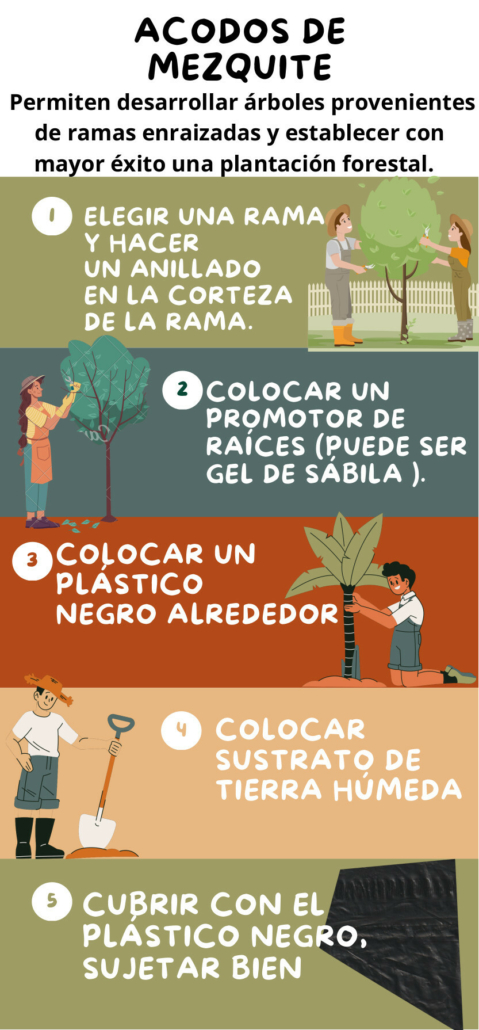
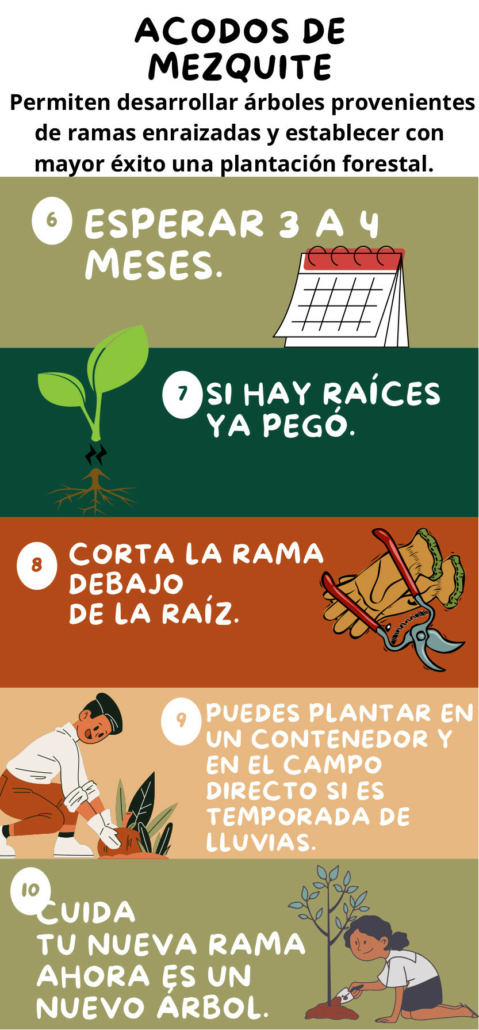
Seasonal Crop
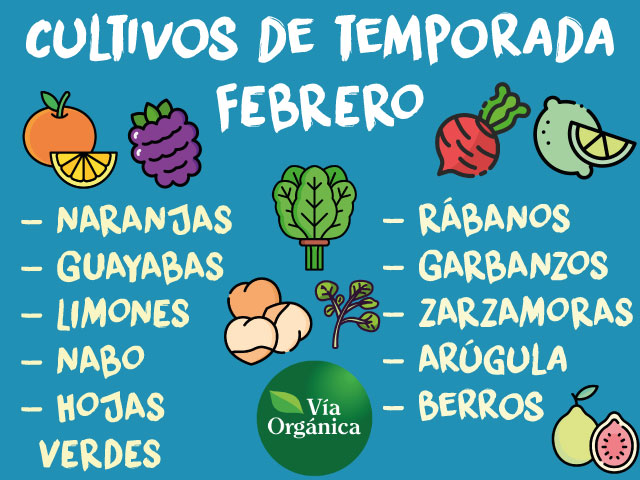
Meet Our Producers
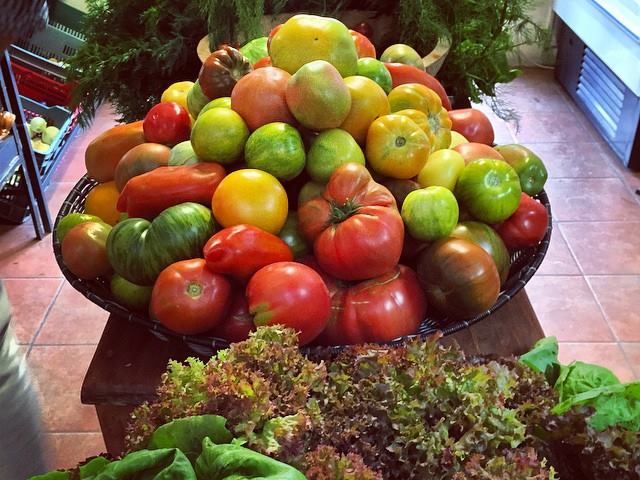
Simón Moreno
Producer of vegetables all year round, Simón also owns a cow barn and has been one of the most constant producers in the rescue of heirloom seeds, obtaining a diversity of tomatoes, eggplants, peppers, sweet potatoes and other vegetables. He is one of the first producers to join the organic flea market, a local, rural market, and now supplies to several local stores that already know him; he has kept his commitment to farming in an organic way and improving his soil health. We appreciate his work and invite you to purchase his products at the store located at Vía Orgánica’s entrance.
Thanks to Don Simón we have healthy food and he is an inspiration for the new generations.
Inspirations
February 2: World Wetlands Day
Wetlands are transition zones where water connects to land, areas that remain temporarily or permanently flooded. Wetlands are vital for human survival and are among the most diverse and productive ecosystems: they are the cradle of biological diversity, sources of water and primary productivity on which countless plant and animal species depend for their lives. We share this chapter 6 of the series “VIVO MÉXICO”. Tour of the most important Mexican wetlands explaining their ecology; structure and function. Made by Roberto Ruiz Vidal.
February Activities
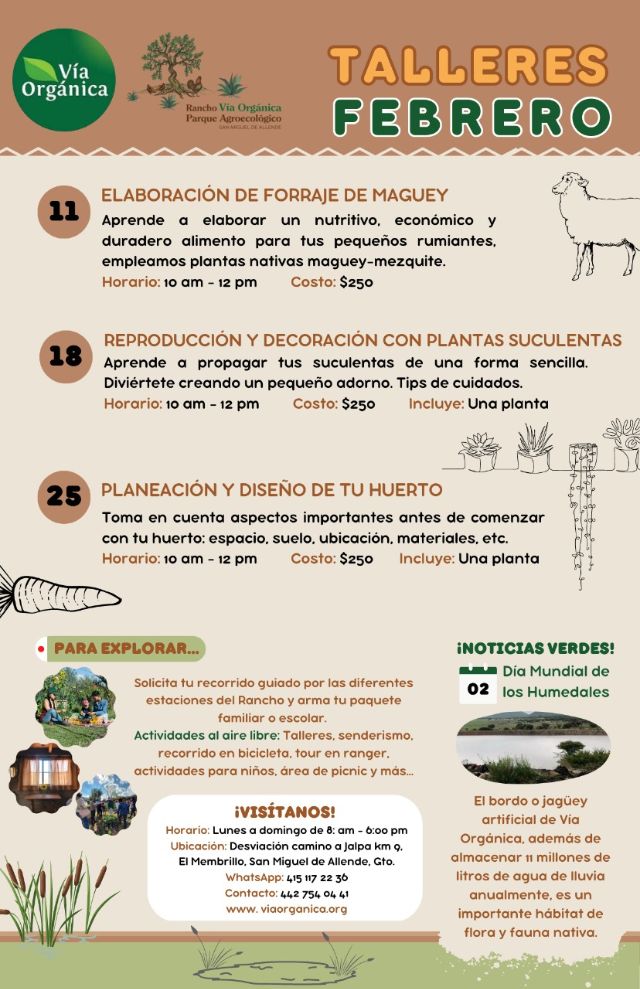
March Activities
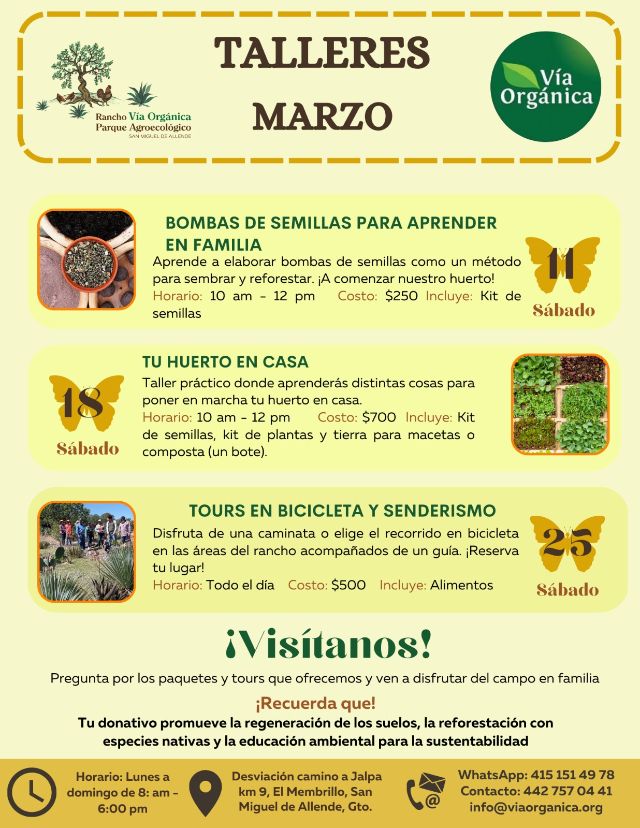
Every Friday we’ve got transportation to Vía Orgánica
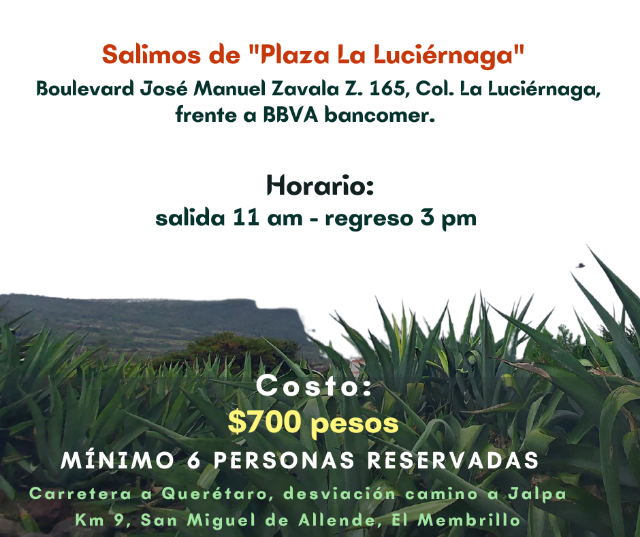
*Includes transportation, food, mini tour of the orchard, and demonstration of making tamales.
RESERVE ON THE FOLLOWING PHONES:
Office: 44 2757 0441
Whatsapp: 41 5151 4978
DON’T FORGET TO VISIT US!
Remember that we are open from 8 am to 6 pm
Carretera México/ Querétaro, turnoff to Jalpa, km 9
Agroecological Park Vía Orgánica.
For information on our products, seeds and harvest,
call our store at 442 757 0490.
Every Saturday and Sunday nixtamalized tortilla with Creole and local corn!
Enjoy our sweet and sour kale chips for children and not so children!
